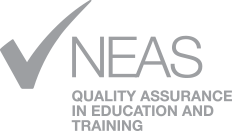When AI Assessment Goes Right…and Wrong
Theory is useful, but examples bring it to life. In this lesson, we’ll look at two short case studies that show the difference between simply copying AI outputs into an exam and thoughtfully guiding AI to create outcome-aligned, learner-appropriate tasks.
The first case shows what happens when AI-generated questions are used without checks: lots of recall, little variety, and a poor fit to the intended outcomes. The second case shows how clear prompts, level-appropriate criteria, and teacher scaffolding can turn AI outputs into meaningful, fair assessments.
As you move through this lesson, think about:
- Which case feels closest to situations you’ve seen (or could imagine) in your own context?
- What specific prompt changes or teacher interventions made the difference?
- How might you adapt those strategies in your own assessment design practice?
By the end, you’ll see that AI can’t guarantee quality on its own — but with the right guidance, it can become a valuable partner in designing assessments that truly reflect learning outcomes.
